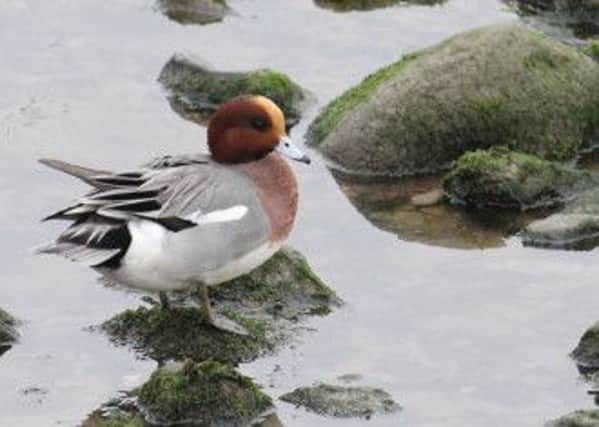UK’s winter storms prove to be water off a duck’s back


THE prolonged spell of wild weather, battering the UK with storm after storm, will live long in the memory of those affected.
Parts of the coastline have been altered forever as colossal waves reduced giant sea stacks to rubble and images of flooded streets, overrun riverbanks and weather maps buried under a blizzard of flood warning signs have become a daily staple of television news.
Advertisement
Hide AdAdvertisement
Hide AdBut out of this sopping mess has emerged a winner – the relentless rain has, as the phrase goes, been “lovely weather for ducks”.
Some wetland nature reserves have even reported double the number of visiting ducks compared to previous years, with large numbers of swans and geese also recorded. The UK’s wetlands do normally act as a kind of giant winter waterfowl hotel for many northern species who fly in to take advantage of our relatively warm, moist weather, but our recent spate of hard, cold winters had seen visiting duck numbers fall in some areas.
So far though, this winter has been very mild, the UK has experienced few frosts and there’s been little or no snow in most places. This has meant waterways have remained clear of ice and damp, and soggy fields have provided a smorgasbord for hungry birds.
Jono Leadley, director of development at the Yorkshire Wildlife Trust and a keen birder himself, says places like Wheldrake Ings Nature Reserve, in North Yorkshire, are a haven for wildfowl.
Advertisement
Hide AdAdvertisement
Hide Ad“A huge number of wildfowl that hone in on the area and spend the winter months here. We have over 30,000 wildfowl, mostly ducks, and over a hundred Whooper Swans that have come down from Iceland.
“It’s a very good feeding ground and roosting site and because this kind of natural habitat has vastly reduced over the years it’s important we maintain the areas we still have.”
So when conditions are just right, the UK in the winter is something of a duck heaven. A large range of species with a mind-boggling array of weird patterns and even weirder bills choose to see out the cold here rather than further north and east.
The Gulf Stream is the main reason for the duck deluge. This powerful ocean current brings us relatively warm, moist air at an unusually high latitude, meaning that the UK is the easiest place to reach for ducks from the Arctic and sub-Arctic.
Advertisement
Hide AdAdvertisement
Hide AdSome of the easiest to see winter ducks at wetlands around the UK right now are the wigeon, pintail, shoveler and teal. The wigeon is one of the commonest and most charismatic of our winter visitors. In good years almost half the European population touch down in the UK with the cinnamon-headed males adding their highly distinctive whistling call to the wetland soundscape.
The pintail is arguably our most beautiful duck but ‘pin’ hardly does justice to the extraordinarily long, tapering central plume that passes for this bird’s tail. One of the world’s commonest ducks, thousands over-winter at UK coastal sites, particularly in north west England.
Even more unusual in appearance than the pintail, the shoveler looks like a duck designed by an over-excited toddler. At first glance the bird looks like a mallard in fancy dress – sporting a huge, oversized comedy beak. But this beak is no joke, the giant appendage enables the shoveler to take advantage of food that other ducks simply can’t get to. For this soup spoon of a bill is used to filter seeds, plankton and other food sources from the bottom of muddy pools, meres and waterways.
The tiny teal is our smallest duck – usually a third the size of the ubiquitous mallard, but, when it comes to the teal, small means beautiful. Males boast exotic crimson and dark green velvet heads, emerald wing flashes and delicate black stomach pencilling. Luckily, tens of thousands see out the winter in the UK so you won’t have to travel far to spot one.
Advertisement
Hide AdAdvertisement
Hide AdThe sight and sound of wild ducks at places like Wheldrake Ings, in the Lower Derwent Valley, is an unforgettable sight and unlike many wildlife experiences is relatively easy to track down in the UK.
“We’ve got over 10,000 wigeon and teal and it’s absolutely awesome at the moment,” says Leadley. “As well as being a quintessential part of the British lowlands during winter it’s also the most invigorating sight and sound.”
So, while the wet weather lasts, perhaps follow the example of the England cricket team down under – and get out for a duck.
For more information about Britain’s wetland reserves visit wwt.org.uk